Introduction: Why Your Garden Needs Bee-Friendly Flowers
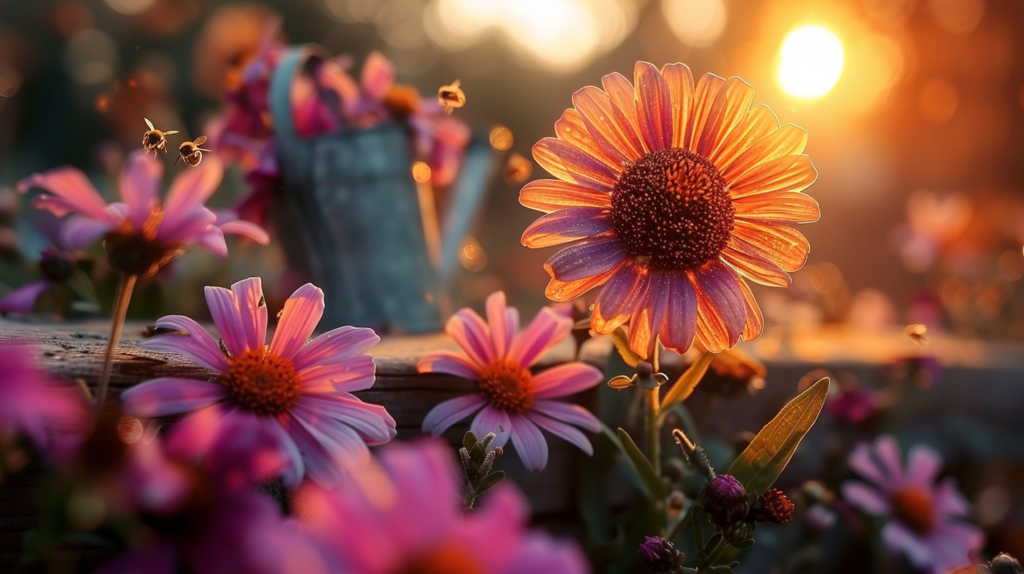
Honeybees are the unsung heroes of our ecosystem, responsible for pollinating one-third of the world’s food crops and nearly 90% of wild flowering plants. Yet, bee populations are in decline due to habitat loss, pesticides, and climate change. As gardeners, we have the power to make a difference by planting flowers that provide these vital pollinators with the nectar and pollen they need to thrive.
This ultimate guide goes beyond a simple list—it’s a deep dive into the 10 best flowers for honeybees, complete with:
- Detailed growing requirements (sun, soil, water, hardiness zones)
- Bloom times & peak nectar production periods
- Step-by-step planting and care instructions
- Companion planting strategies for healthier gardens
- Natural pest control methods (no chemicals needed!)
- Special bee-attracting features of each flower
Whether you’re a seasoned gardener or just starting out, these science-backed, bee-approved flowers will transform your outdoor space into a pollinator paradise. Let’s explore how to create a garden that buzzes with life!
1. Lavender (Lavandula) – The Bee’s Favorite Fragrance
Why Honeybees Love It
Lavender’s long bloom period (4+ weeks) and high nectar concentration make it a top choice for bees. Its strong fragrance acts as a natural attractant, guiding pollinators from afar.
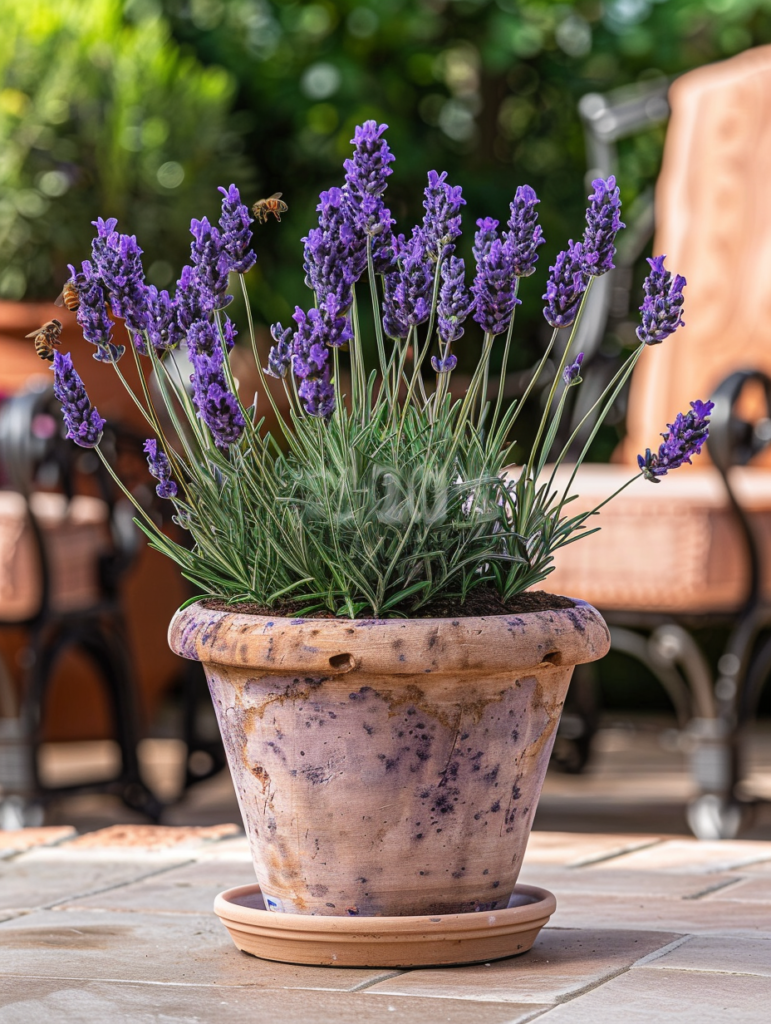
Growing Guide
- Sun: Full sun (6+ hours)
- Soil: Well-draining, sandy/gravelly (pH 6.5–7.5)
- Water: Drought-tolerant (water deeply but infrequently)
- Zones: 5–9 (English lavender hardiest)
Planting & Care
✔ When to Plant: Spring or early fall
✔ Spacing: 18–24 inches apart
✔ Pruning: Cut back 1/3 in early spring to prevent woody growth
✔ Pests: Rare (deer-resistant, repels moths & fleas)
Pro Tip: Plant near vegetable gardens—lavender deters pests while attracting pollinators!
Best Varieties for Bees:
- Lavandula angustifolia (English lavender)
- ‘Hidcote’ (compact, deep purple)
- ‘Munstead’ (early bloomer)
2. Sunflower (Helianthus annuus) – The Pollen Powerhouse
Why Honeybees Love It
A single sunflower head contains up to 2,000 tiny florets, each producing nectar and pollen. The large, flat shape makes landing easy for bees.
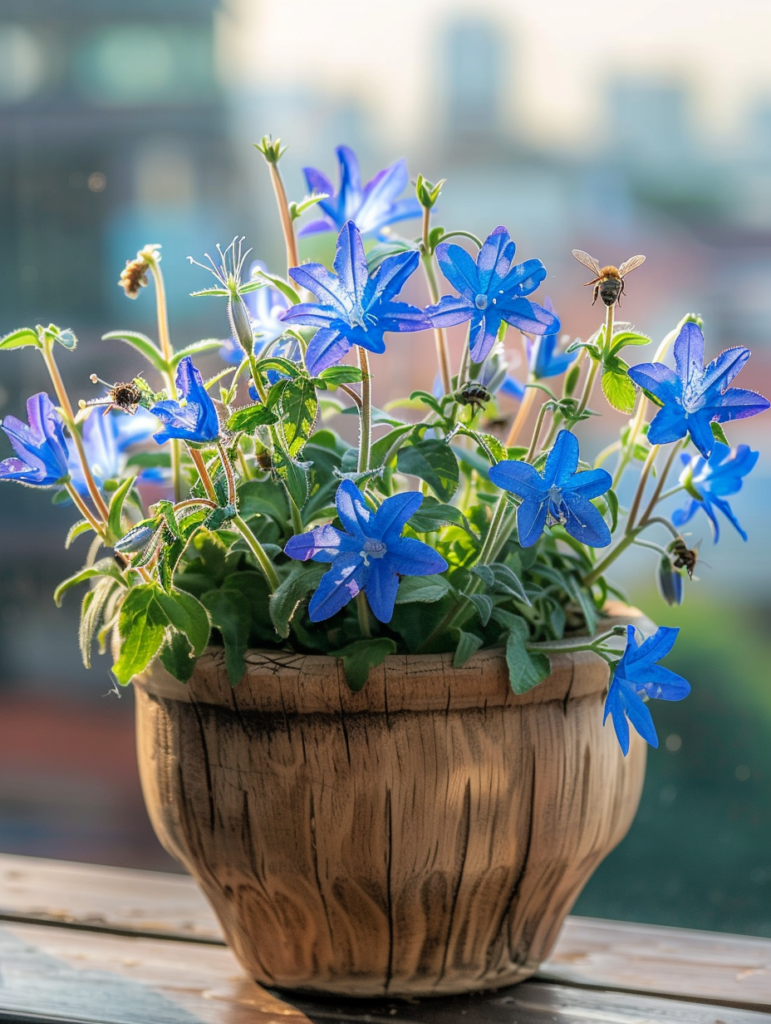
Growing Guide
- Sun: Full sun (6–8 hours)
- Soil: Fertile, well-draining (pH 6.0–7.5)
- Water: Moderate (1 inch/week)
- Zones: 2–11 (annual)
Planting & Care
✔ When to Plant: After last frost (soil >55°F)
✔ Spacing: 12–24 inches (dwarf) to 3 feet (giant)
✔ Support: Stake tall varieties in windy areas
✔ Pests: Watch for aphids (spray with water or neem oil)
Pro Tip: Choose pollen-rich varieties (not pollenless florist types).
Best Varieties for Bees:
- ‘Lemon Queen’ (heirloom, abundant pollen)
- ‘Autumn Beauty’ (multi-colored, long bloom)
- ‘Mammoth Grey Stripe’ (massive seed producer)
3. Borage (Borago officinalis) – The Bee’s Endless Buffet
Why Honeybees Love It
Borage replenishes nectar every 2 minutes, providing a 24/7 food source. Its star-shaped blue flowers are highly visible to bees.
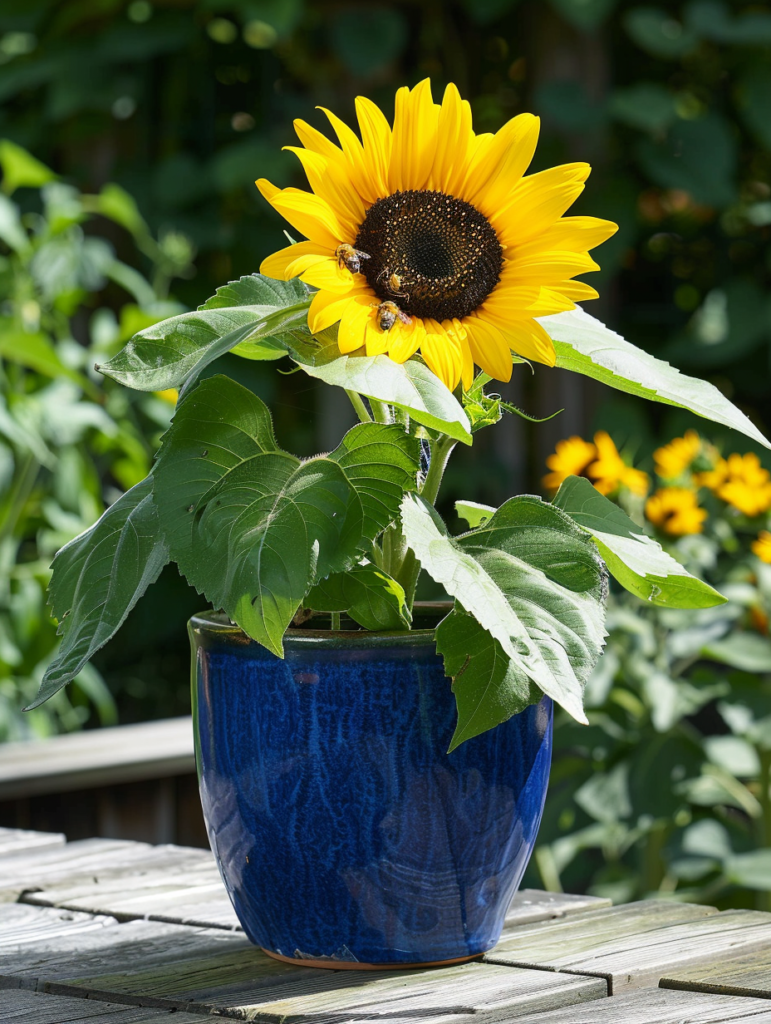
Growing Guide
- Sun: Full sun to part shade
- Soil: Average, tolerates poor soil (pH 6.0–7.0)
- Water: Moderate (drought-tolerant once established)
- Zones: 2–11 (self-seeding annual)
Planting & Care
✔ When to Plant: Early spring or fall
✔ Spacing: 12–18 inches apart
✔ Harvesting: Edible flowers (cucumber flavor) for salads
✔ Pests: Rare (slugs may attack seedlings)
Pro Tip: Plant near tomatoes & strawberries—borage improves their growth and deters hornworms.
Bonus: Borage honey is light and delicate, prized by beekeepers!
4. Coneflower (Echinacea) – The Drought-Resistant Bee Magnet
Why Honeybees Love It
Echinacea’s spiky central cone provides easy pollen access, while the long bloom season (June–October) supports bees through summer.
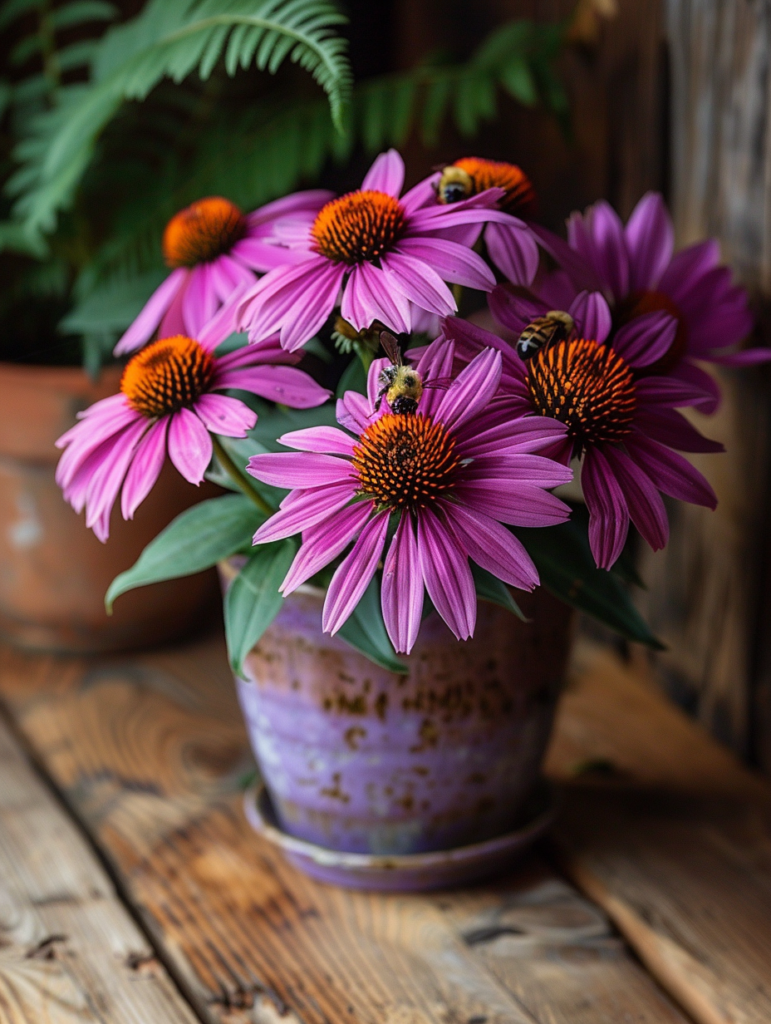
Growing Guide
- Sun: Full sun to light shade
- Soil: Well-draining, tolerates clay (pH 6.0–7.0)
- Water: Drought-tolerant (1 inch/week in droughts)
- Zones: 3–9
Planting & Care
✔ When to Plant: Spring or early fall
✔ Spacing: 18–24 inches apart
✔ Deadheading: Extends blooming
✔ Pests: Japanese beetles (handpick or use milky spore)
Pro Tip: Leave seed heads in winter—birds love them!
Best Varieties for Bees:
- Echinacea purpurea (native purple coneflower)
- ‘Magnus’ (large blooms)
- ‘White Swan’ (rare white variety)
5. Bee Balm (Monarda) – The Hummingbird & Bee Duo
Why Honeybees Love It
Bee balm’s tubular flowers are perfectly shaped for long-tongued bees (like bumblebees). Its minty fragrance repels pests while attracting pollinators.
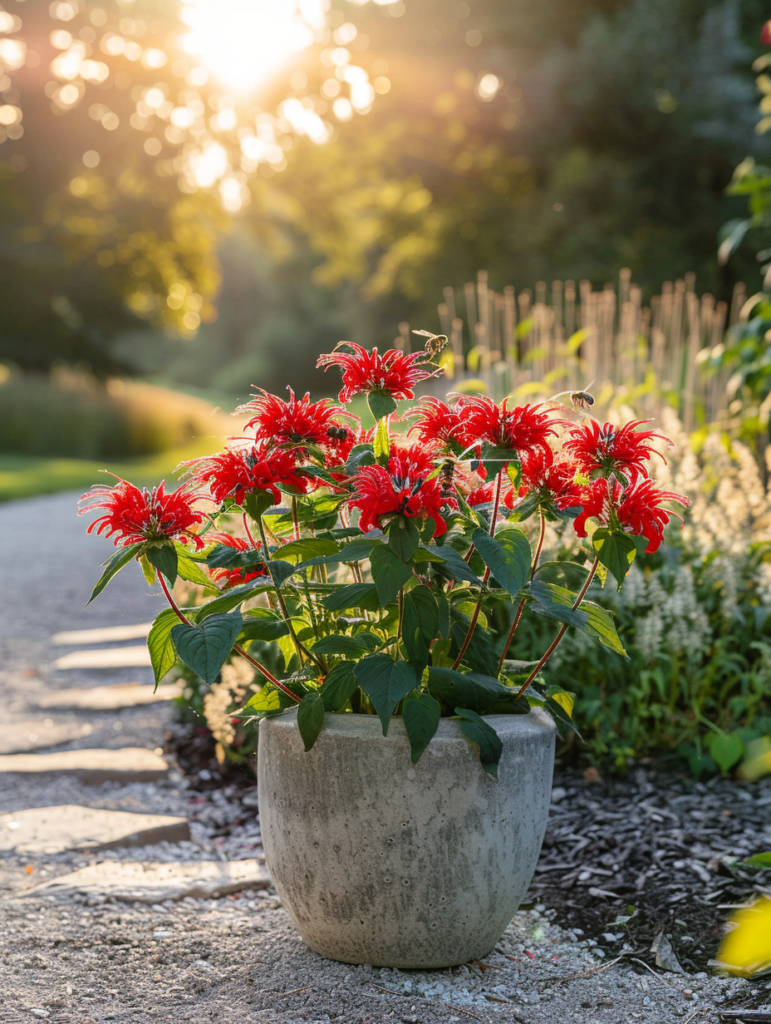
Growing Guide
- Sun: Full sun to part shade
- Soil: Moist, rich (pH 6.0–7.0)
- Water: Keep consistently moist (mulch to retain water)
- Zones: 4–9
Planting & Care
✔ When to Plant: Spring after frost
✔ Spacing: 18–24 inches apart
✔ Dividing: Every 2–3 years to prevent overcrowding
✔ Pests: Powdery mildew (plant resistant varieties like ‘Jacob Cline’)
Pro Tip: Use leaves to make bee balm tea (similar to Earl Grey)!
Best Varieties for Bees:
- ‘Jacob Cline’ (red, mildew-resistant)
- ‘Blue Stocking’ (violet-purple)
- ‘Pardon My Pink’ (compact for small gardens)
6. Clover (Trifolium) – The Lawn Superfood for Bees
Why Honeybees Love It
Clover’s dense clusters of tiny flowers provide high-volume nectar production, making it one of the most efficient bee plants. Its low-growing habit creates accessible feeding stations, especially for smaller bee species.
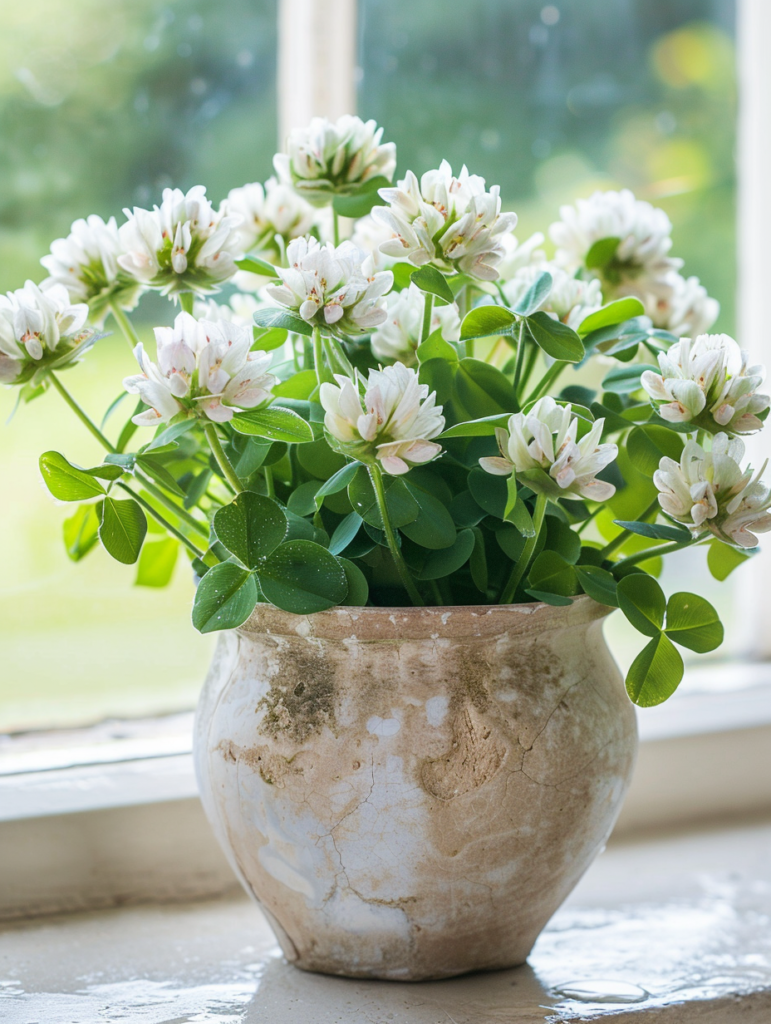
Growing Guide
- Sun: Full sun to partial shade
- Soil: Adaptable to most types (prefers pH 6.0-7.0)
- Water: Moderate (1 inch/week), drought-tolerant
- Zones: 3-10 (perennial varieties)
Planting & Care
✔ When to Plant: Early spring or fall
✔ Spacing: Broadcast seed at 1/4 lb per 1,000 sq ft
✔ Mowing: Keep at 3-4 inches to encourage flowering
✔ Pests: Rare (naturally suppresses weeds)
Pro Tip: Replace grass lawns with microclover for a bee-friendly alternative that needs less mowing!
Best Varieties for Bees:
- White clover (Trifolium repens)
- Red clover (Trifolium pratense)
- Crimson clover (Trifolium incarnatum)
Bonus: Clover fixes nitrogen in soil, reducing fertilizer needs!
7. Goldenrod (Solidago) – The Fall Feast Savior
Why Honeybees Love It
Blooming from late summer through frost, goldenrod provides critical late-season nutrition when other flowers fade. Its plume-like flower clusters offer landing platforms for multiple bees at once.
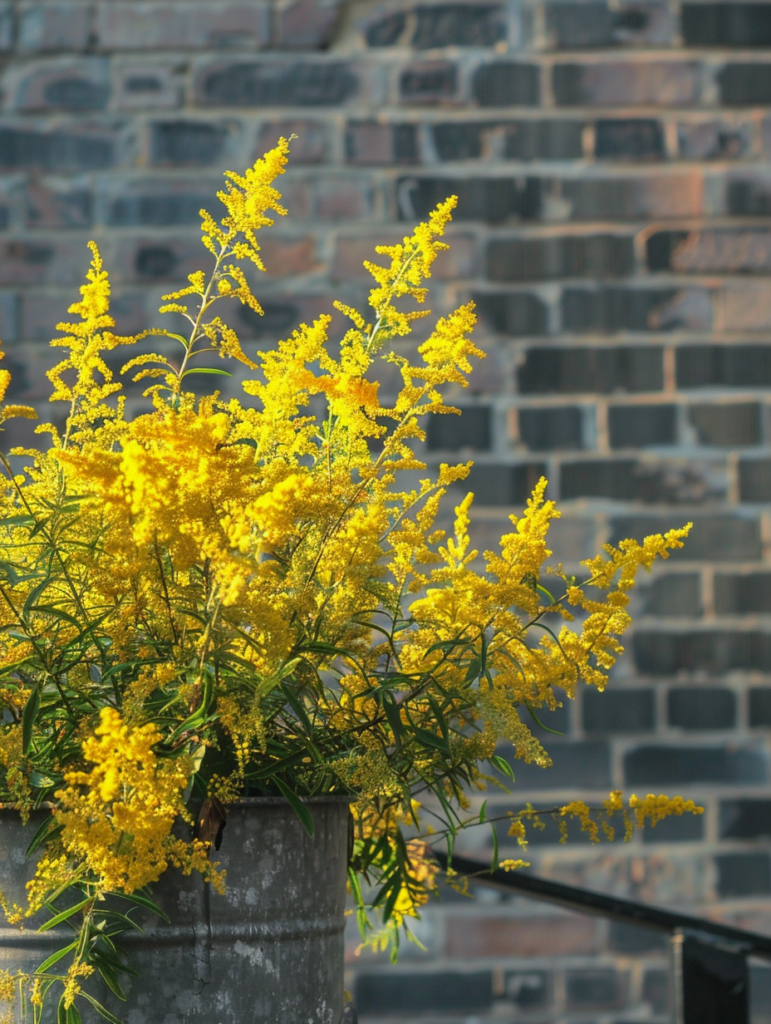
Growing Guide
- Sun: Full sun
- Soil: Thrives in poor soil (pH 5.5-7.5)
- Water: Drought-tolerant once established
- Zones: 3-9
Planting & Care
✔ When to Plant: Spring or fall
✔ Spacing: 18-24 inches apart
✔ Pruning: Cut back by 1/3 in early summer for bushier growth
✔ Pests: Occasionally aphids (use strong water spray)
Pro Tip: Pair with asters for a stunning fall pollinator duo!
Best Varieties for Bees:
- Solidago canadensis (Canada goldenrod)
- Solidago rugosa (rough-stemmed goldenrod)
- ‘Fireworks’ (compact cultivar)
Myth Buster: Goldenrod pollen is too heavy to be airborne and doesn’t cause hay fever!
8. Cosmos (Cosmos bipinnatus) – The Easy-Blooming Bee Diner
Why Honeybees Love It
Cosmos’ open, daisy-like form provides easy pollen access, especially for short-tongued bees. Its long bloom period (summer to frost) offers reliable sustenance.
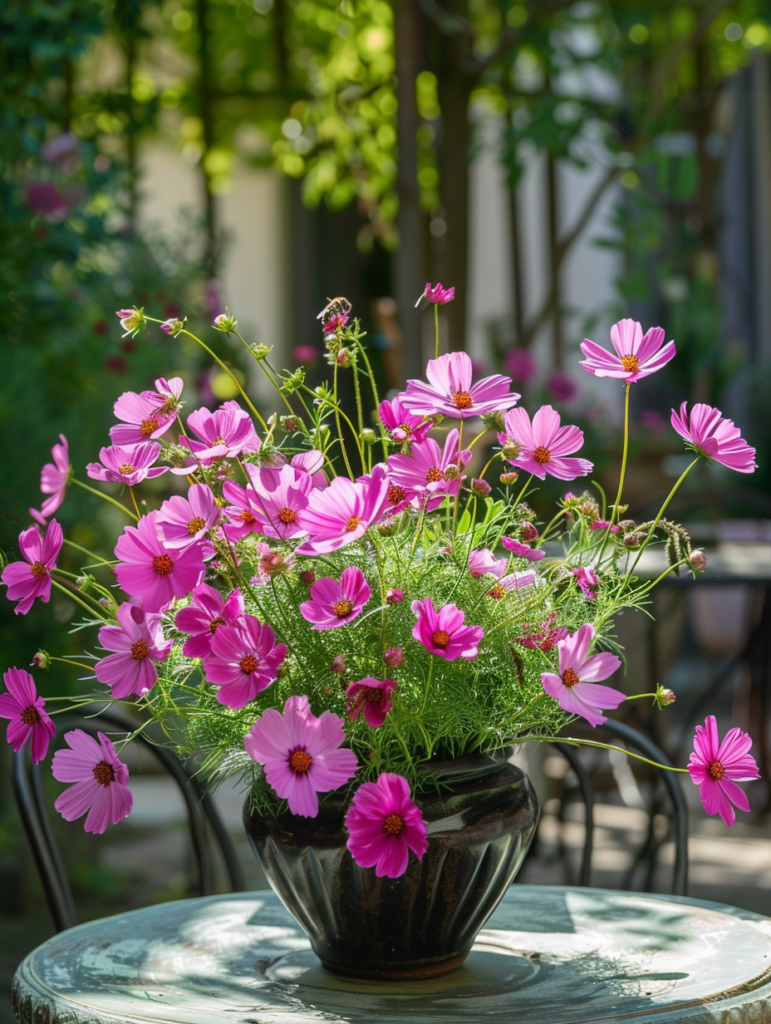
Growing Guide
- Sun: Full sun
- Soil: Tolerates poor soil (pH 6.0-8.0)
- Water: Low (overwatering reduces blooms)
- Zones: 2-11 (annual)
Planting & Care
✔ When to Plant: Direct sow after last frost
✔ Spacing: 12-18 inches apart
✔ Deadheading: Promotes continuous blooming
✔ Pests: Rare (occasionally aphids)
Pro Tip: Let some flowers go to seed – they’ll self-sow for next year!
Best Varieties for Bees:
- ‘Sensation Mix’ (tall, traditional cosmos)
- ‘Cupcakes’ (unique cup-shaped blooms)
- ‘Sea Shells’ (tubular petals)
Bonus: Cosmos are fantastic cut flowers that keep blooming after cutting!
9. Catmint (Nepeta) – The Drought-Proof Pollinator Hub
Why Honeybees Love It
Catmint’s long bloom season (May through September) and mint-family nectar attract diverse pollinators. Its gray-green foliage is deer-resistant while flowers feed bees.
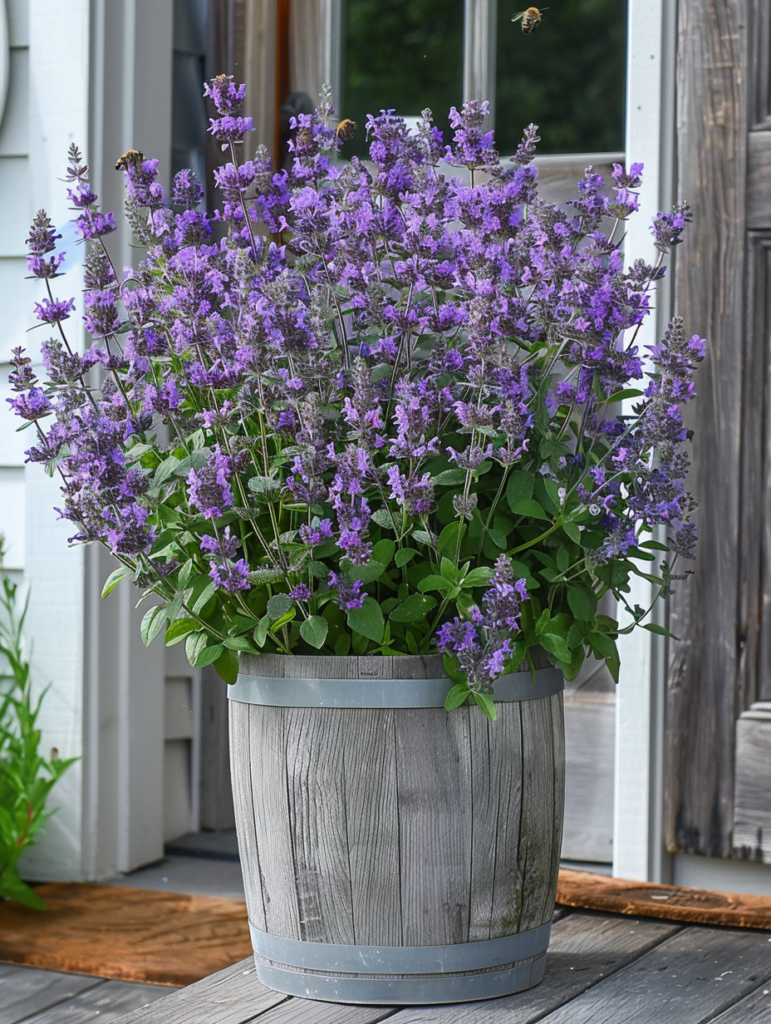
Growing Guide
- Sun: Full sun to part shade
- Soil: Well-draining (pH 6.0-7.5)
- Water: Drought-tolerant once established
- Zones: 3-8
Planting & Care
✔ When to Plant: Spring or early fall
✔ Spacing: 18-24 inches apart
✔ Pruning: Shear back by half after first bloom
✔ Pests: Virtually pest-free
Pro Tip: Plant along walkways where humans can enjoy the fragrance!
Best Varieties for Bees:
- Nepeta faassenii (common catmint)
- ‘Walker’s Low’ (long-blooming)
- ‘Six Hills Giant’ (tall variety)
Fun Fact: While cats love it, catmint doesn’t intoxicate bees!
10. Phacelia (Phacelia tanacetifolia) – The Beekeeper’s Secret Weapon
Why Honeybees Love It
Called the “honeybee’s best friend”, phacelia produces nectar constantly with some of the highest sugar concentrations (58%) of any bee plant.
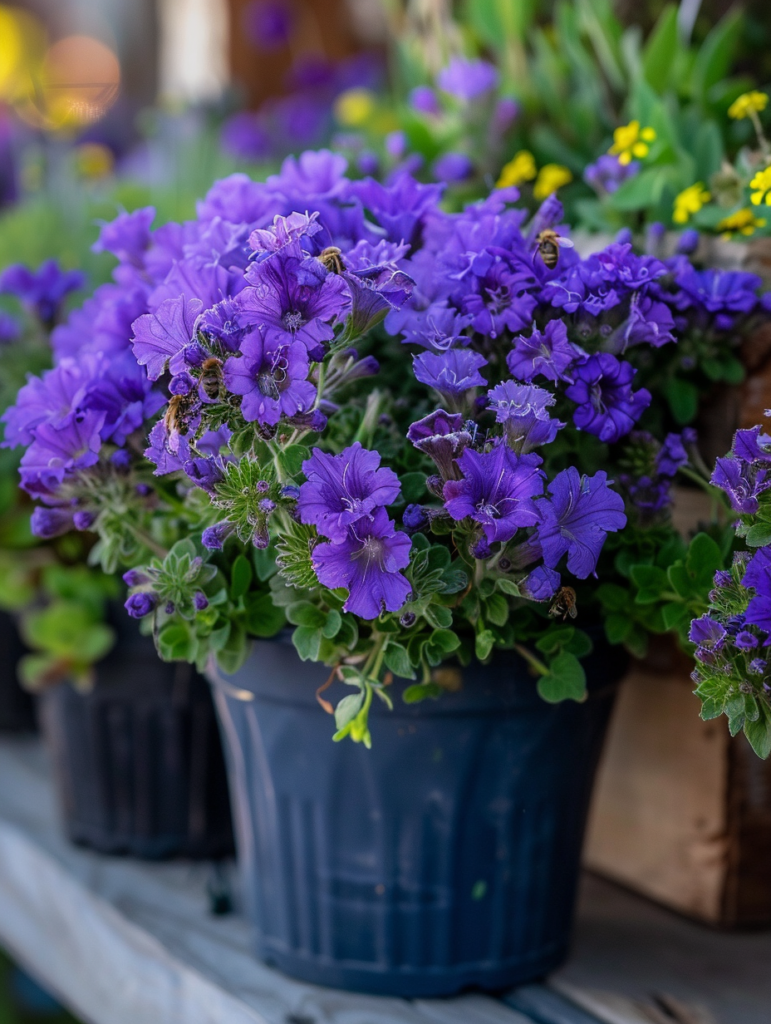
Growing Guide
- Sun: Full sun to part shade
- Soil: Adaptable (pH 6.0-8.0)
- Water: Moderate
- Zones: 2-11 (annual)
Planting & Care
✔ When to Plant: Early spring through fall
✔ Spacing: Broadcast seed or plant 6 inches apart
✔ Growth Habit: Reaches 2-4 feet tall
✔ Pests: None significant
Pro Tip: Use as a cover crop – it improves soil while feeding bees!
Special Features:
- Blooms in just 6-8 weeks from sowing
- Self-seeds readily
- Attracts hoverflies that eat aphids
11. Coleus (Plectranthus scutellarioides) – The Surprising Bee Backup
Why Honeybees Love It
When allowed to flower, coleus’s tiny blue or white bloom spikes (often removed by gardeners) become emergency nectar stations in late fall. Bees favor wild-type varieties with simpler flowers over showy hybrid foliage types.
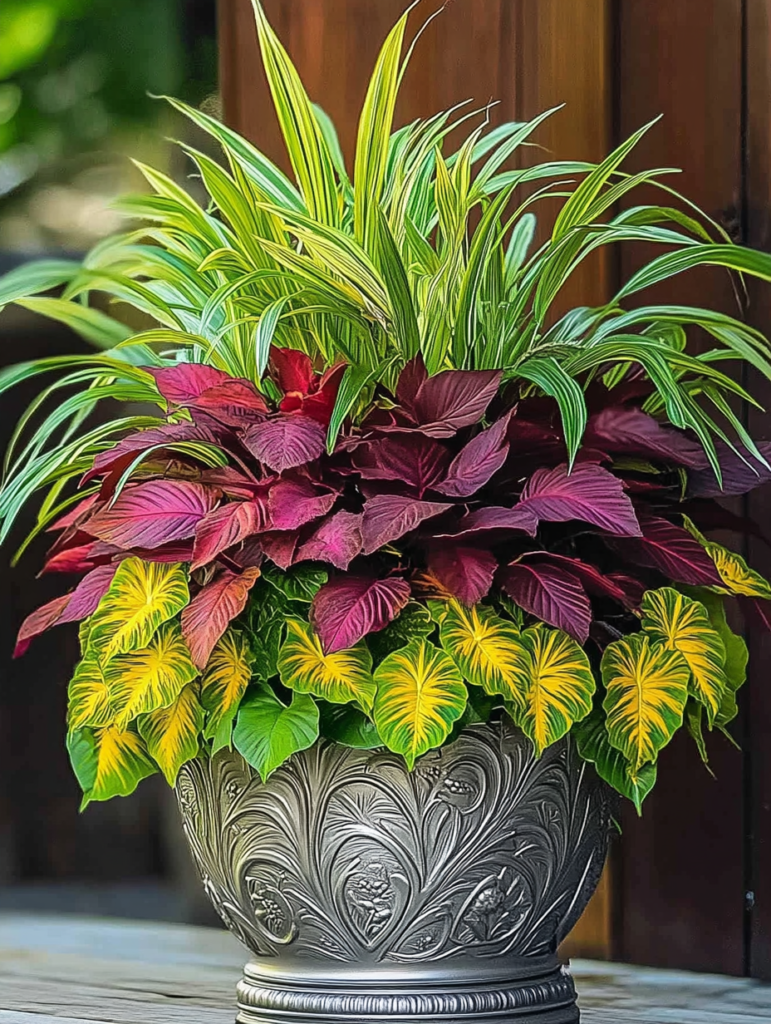
Growing Guide
- Sun: Part shade (2-4 hours morning sun)
- Soil: Moist, rich (pH 6.0-7.0)
- Water: Consistent moisture (wilts dramatically)
- Zones: 10-11 as perennial / grown as annual elsewhere
Planting & Care
✔ When to Plant: After last frost
✔ Spacing: 12-18 inches apart
✔ For Bees: Stop pinching blooms by mid-August
✔ Pests: Watch for mealybugs (wipe with alcohol)
Pro Tip: Pair with impatiens for a shade-container duo that feeds bees!
Best Varieties for Bees:
- Plectranthus scutellarioides (wild form)
- ‘Wasabi’ (white flowers, lime-green leaves)
- ‘Black Dragon’ (purple blooms, dark foliage)
Beekeeper Bonus: Phacelia honey is light and aromatic, often called “lavender honey”!
Conclusion: Your Garden Can Save the Bees—One Flower at a Time
Planting for pollinators isn’t just about adding beauty to your garden—it’s about sustaining the delicate balance of our ecosystem. By choosing these 10 powerhouse flowers, you’re providing honeybees with:
✔ High-quality nectar and pollen sources
✔ Season-long blooms (from early spring to late fall)
✔ Safe habitats free from harmful pesticides
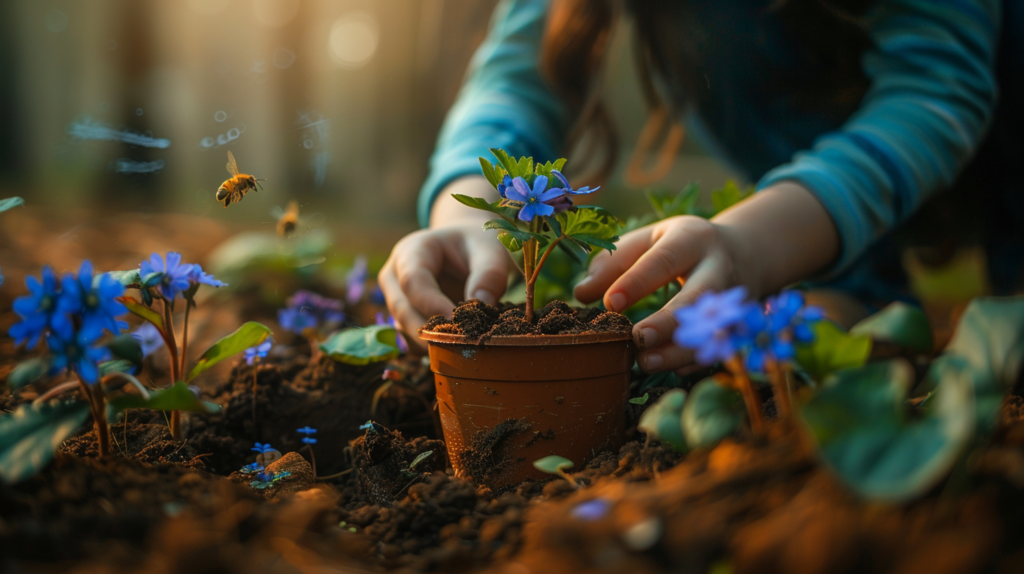
Take It to the Next Level:
- Track your blooms: Keep a journal to ensure flowers for every season.
- Go chemical-free: Embrace natural pest control (like ladybugs for aphids).
- Spread the buzz: Share seeds or cuttings with neighbors to expand bee habitats.
Every flower counts. Whether you have a vast backyard or a small balcony garden, your efforts directly support honeybee survival. So grab your gardening gloves, plant these bee-friendly blooms, and watch as your garden comes alive with the joyful hum of happy bees.
Ready to dig in? Which of these flowers will you plant first? Share your plans in the comments—we’d love to hear how you’re helping the bees! 🌸🐝
Final Thought:
“The hum of bees is the voice of the garden.” — Elizabeth Lawrence
By nurturing these flowers, you’re not just growing a garden—you’re growing hope for honeybees and the future of our planet. Happy planting!
Would you like a printable cheat sheet of these flowers to keep in your gardening toolkit? Let me know!